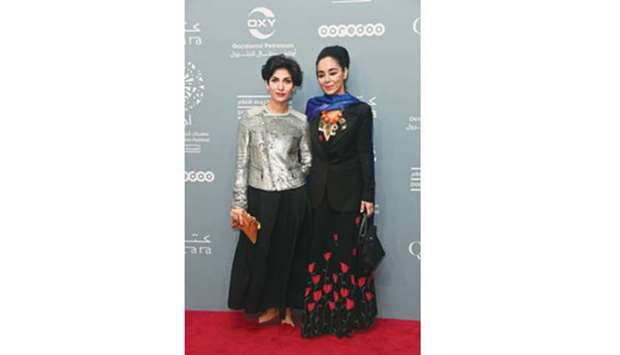Still known as the ‘Star of the East,’ the artiste’s weekly broadcasts on Radio Cairo also remained popular in the region, according to the director. Looking For Oum Kulthum (Germany, Austria, Italy, Lebanon, Morocco, Qatar / 2017), that would resonate in the Middle East guided her decision not to make a straightforward biopic. She, however, created a story within the story through the addition of an Iranian female character, a kind of alter ego, who like Neshat herself is engaged in a search for the star.
“I spent six years preparing this film, I know the story very well. I knew I could not cover her entire life, so I chose to focus on the pivotal moments that related to the story,” Neshat noted.
“I am a poetic, visual artist and for me dialogue can sometimes diminish the impact of a scene, so I tried to keep it to a minimum,” she said. “I wanted to show the West the side of the Middle East they don’t usually see – poetry, singing and culture,” the director added. “As for why I chose Oum Kulthum, it’s because there is no one else of her standing in our region.”
Commenting on actress Yasmine Raeis’ portrayal, she said: “She learned the young Oum Kulthum’s body language and lip-synched beautifully and completely transformed herself when she played her as an older woman. Yasmine demonstrated a real range of acting and I think she was an excellent choice.”
In her response to whether she had ‘found’ Oum Kulthum, Neshat said that she was still looking, hence the title of the film.
“You cannot demystify a legend. She is a muse to so many of us. Someone like Oum Kulthum cannot be reduced to the human scale, she has become bigger than that.”
Later in the festival, Neshat and her film have also been the focus of an Ajyal Talk, when she spoke with urbanist and architect, Fatma al-Sehlawi, about her early life in Iran. Looking For Oum Kulthum was the last of the four ‘thought-provoking’ Ajyal Talks, which forms part of the festival, presented by the Doha Film Institute (DFI).
The director also talked about her education in the United States, where she was by the time the Iranian Revolution came and her inability to return to her family for 12 years. It was during this period that she began her exploration of visual art, first through photography and installation and later, through film.
Neda Rahmanian and Shirin Neshat attended the Looking for Oum Kulthoum premiere during the Ajyal Youth Film Festival recently. PICTURE: Eamonn M McCormack/Getty Images

